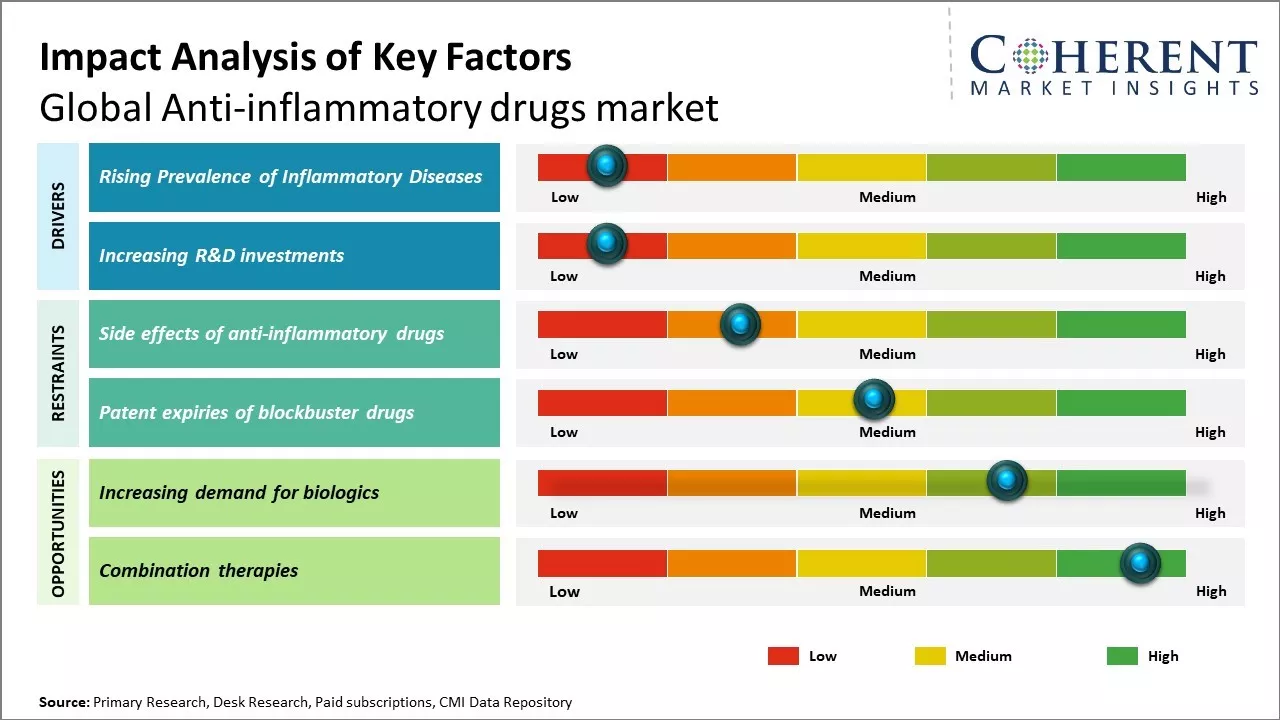Global Anti-inflammatory drugs market is estimated to be valued at USD 115.55 Bn in 2025 and is expected to reach USD 210.02 Bn by 2032, exhibiting a compound annual growth rate (CAGR) of 8.9% from 2025 to 2032.

To learn more about this report, Request sample copy
Rising geriatric population suffering from arthritis and other joint disorders can boost demand for anti-inflammatory drugs for pain management. Increasing adoption of analgesic drugs due to changing lifestyle patterns and rising awareness regarding treatment of chronic conditions can drive the market growth. However, side effects associated with long term use of certain anti-inflammatory drugs along with availability of alternative treatment options can hamper the market growth in the near future. Introduction of advanced drugs with lesser side effect profile can offer market growth opportunities.
Rising Prevalence of Inflammatory Diseases
Increasing incidence and prevalence of various inflammatory diseases across the globe can drive the anti-inflammatory drugs market growth. Inflammation is the body's natural response to injuries or infections, however, chronic or long-term inflammation can damage tissues and even cause other diseases. Rising sedentary lifestyle and changing dietary patterns have made people more prone to obesity, diabetes and cardiovascular issues all of, which have an underlying inflammatory component. According to various medical studies, obesity, which has become a global epidemic, has direct links to inflammation in the body. Adipose or fat tissue when accumulated in large quantities triggers the immune system to produce abnormal levels of cytokines, which are messenger molecules that cause chronic inflammation. High blood sugar levels seen in diabetes patients lead to increased oxidative stress and free radical formation, damaging cells and tissues over time. Other diseases like atherosclerosis, rheumatoid arthritis, multiple sclerosis also manifest due to prolonged inflammation. For instance, according to an article published by MDPI Journal, the incidence of inflammatory bowel disease (IBD), encompassing ulcerative colitis (UC) and Crohn’s disease (CD), has been increasing globally including Asia Pacific. Previously more common in Western countries, IBD now shows significant prevalence in Asian populations due to changing lifestyles, diets, and environmental factors. IBD is increasingly prevalent due to changing lifestyles and environmental factors. In Asia, UC has a single peak age at diagnosis, while CD shows two peaks, differing from the West. Interestingly, males in Asia have higher IBD rates compared to females, unlike in the West. Genetic factors play a significant role, with variations seen between Caucasian and non-Caucasian populations. Environmental factors like smoking and hygiene practices can also led to development of inflammatory bowel disease.
Joining thousands of companies around the world committed to making the Excellent Business Solutions.
View All Our Clients